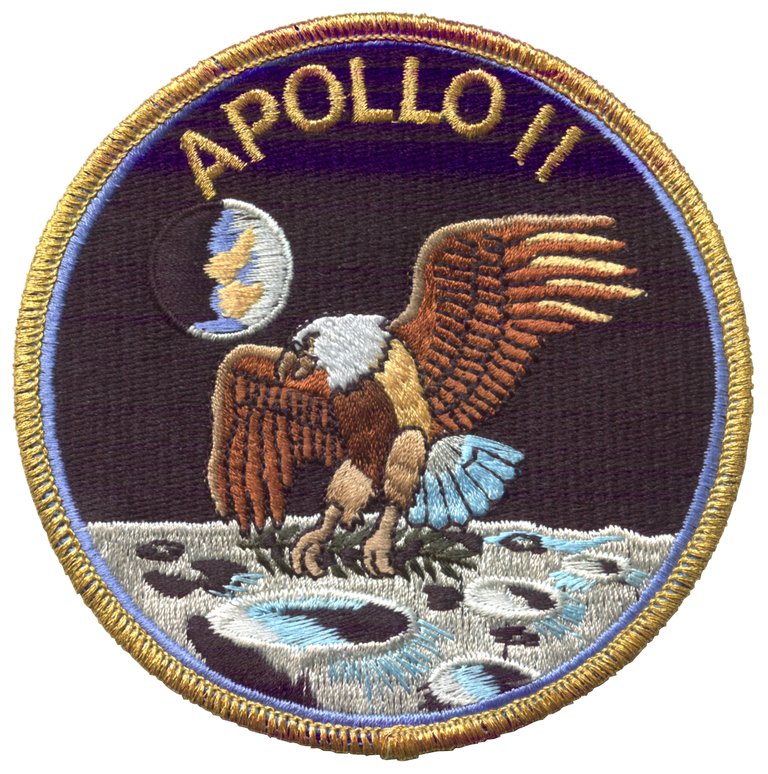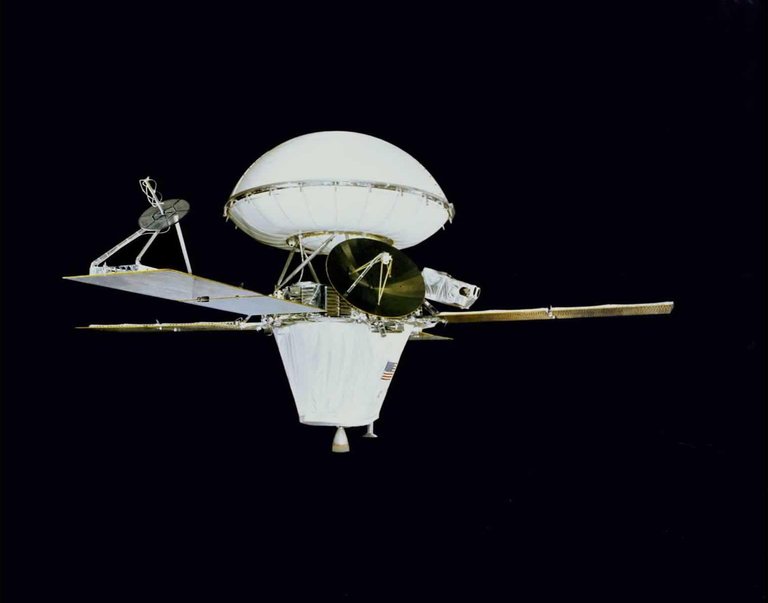The Eagle has Landed
Mientras que muchos sostienen que todo es mentira y que en realidad no fue otra cosa que unos montajes urdidos por la NASA y el gobierno americano, algunos otros románticos y crédulos de la ciencia, la astronomía y la carrera espacial celebramos hoy 20 de julio dos grandes efemérides: por un lado la llegada del hombre a la Luna y por otro lado la llegada de sonda espacial Viking 1 a Marte.
While many argue that the whole thing is a lie and that it was really nothing more than a hoax concocted by NASA and the American government, some other romantics and gullible believers in science, astronomy and the space race are celebrating two great anniversaries today, 20 July: on the one hand the arrival of man on the Moon and on the other the arrival of the Viking 1 space probe on Mars.

Un 20 de julio de 1969 el módulo lunar "Eagle" perteneciente a la misión Apolo 11 se posó sobre la Luna y tanto Armstrong como Aldrin descendieron y caminaron sobre su superficie. Y una curiosidad al respecto de la misión Apolo 11 es el por qué se le llama "Eagle" al módulo lunar. La explicación es sencilla: las misiones Apolo constaban de diferentes fases en las que fragmentos del cohete propulsor se iban separando hasta finalmente quedar únicamente dos módulos unidos pero independientes entre sí. Por un lado el módulo de mando que se quedaría orbitando alrededor de la Luna y por otro lado el módulo lunar que sería el que una vez desprendido del primero, se posaría sobre la superficie del satélite. Collins se quedó pilotando el módulo de mando, mientras que Armstrong y Aldrin pasaron al módulo lunar para descender a la superficie lunar.
On 20 July 1969, the Apollo 11 lunar module "Eagle" landed on the moon and both Armstrong and Aldrin descended and walked on its surface. And a curiosity about the Apollo 11 mission is why the lunar module is called "Eagle". The explanation is simple: the Apollo missions consisted of different phases in which fragments of the rocket booster separated until finally there were only two united but independent modules. On the one hand, the command module would remain in orbit around the Moon, and on the other hand, the lunar module, which, once detached from the first, would land on the surface of the satellite. Collins remained in the command module, while Armstrong and Aldrin transferred to the lunar module to descend to the lunar surface.

El protocolo de comunicación de la NASA establecía que cada módulo debía tener un identificador, un nombre que permitiese distinguir cualquier emisión de su procedencia. Mientras que ambos módulos estaban unidos se le denominaba Apolo 11, pero una vez que se separaron cada uno tenía su propia identificación. Así al módulo de mando se le llamó "Columbia" en honor a la nave espacial de la novela “De la Tierra a la Luna” de Julio Verne, mientras que al módulo lunar se le llamó “Eagle” por el emblema que los astronautas llevaban en el traje de astronauta, un águila calva sosteniendo una rama de olivo. Esta especie de águila es un emblema nacional en Estados Unidos y aparece en muchos aspectos de la simbología nacional.
NASA's communication protocol stipulated that each module had to have an identifier, a name that would distinguish any broadcast from its source. While the two modules were joined together, they were called Apollo 11, but once they were separated, each had its own identification. Thus the command module was called "Columbia" after the spacecraft in Jules Verne's novel "From the Earth to the Moon", while the lunar module was called "Eagle" after the emblem the astronauts wore on their astronaut suits, a bald eagle holding an olive branch. This species of eagle is a national emblem in the United States and appears in many aspects of national symbology.

También hoy 20 de julio celebramos otro hito en la carrera espacial. En este caso el 20 de julio de 1976, la misión denominada Viking 1 llegaba al planeta Marte y se posaba por primera vez sobre el mismo. Al igual que en las misiones Apolo, las sondas espaciales no tripuladas constaban de dos sondas independientes entre sí; una llamada Viking Orbiter I debía permanecer orbitando alrededor de Marte y otra, la Viking Lander I debía posarse sobre el planeta. Tras cuatro años enviando información y debido a fallos técnicos se dio concluida la misión de ambas sondas y se desconoce que ha ocurrido con ellas.
Also today, 20 July, we celebrate another milestone in the space race. On 20 July 1976, the Viking 1 mission reached the planet Mars and landed on it for the first time. As with the Apollo missions, the unmanned space probes consisted of two independent probes; one called Viking Orbiter I was to remain in orbit around Mars and the other, Viking Lander I, was to land on the planet. After four years of sending information and due to technical failures, the mission of both probes was terminated and it is not known what has happened to them.
Referencias:
https://elpais.com/elpais/2019/07/08/ciencia/1562595380_206776.html
https://mrgorsky.es/2018/03/15/de-porque-al-modulo-lunar-del-apolo-11-se-le-llamo-eagle-y-los-otros-indicativos-para-las-naves-apolo/
https://www.nationalgeographic.com.es/llegada-del-hombre-a-la-luna/cronologia-mision-apolo-11-primer-viaje-a-luna_14364
https://www.elmundo.es/blogs/elmundo/apuntesnasa/2016/07/20/el-error-en-el-emblema-del-apolo-11.html
https://blog.fsl.es/2020/01/29/por-que-el-aguila-calva-es-el-simbolo-de-estados-unidos/
https://www.europapress.es/ciencia/misiones-espaciales/noticia-viking-fue-hace-45-anos-primera-nave-aterrizo-marte-20210720122852.html

Thanks for your contribution to the STEMsocial community. Feel free to join us on discord to get to know the rest of us!
Please consider delegating to the @stemsocial account (85% of the curation rewards are returned).
You may also include @stemsocial as a beneficiary of the rewards of this post to get a stronger support.
Ha transcurrido medio siglo y ahora dicen que que el logro del Apollo 11 fue de Stanley Kubrick que lo contrato la NASA para ganar la carrera espacial. Si tal teoría es verdad o mentira, ya tiene poca importancia en un mundo tan manipulado y cada día más distópico.
Menos mal que fue Stanley Kubrick y no contrataron a Santiago Segura. 🤣🤣🤣
Jaja. Menos mal, Torrente seria presidente y el Atleti la copa FIFA.